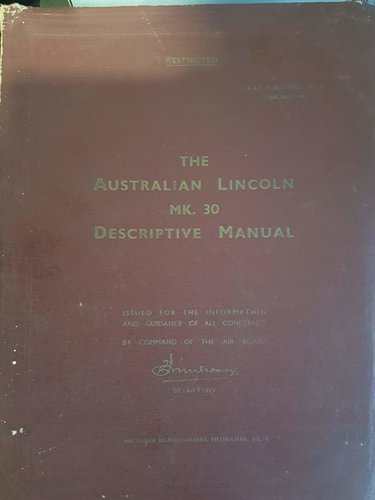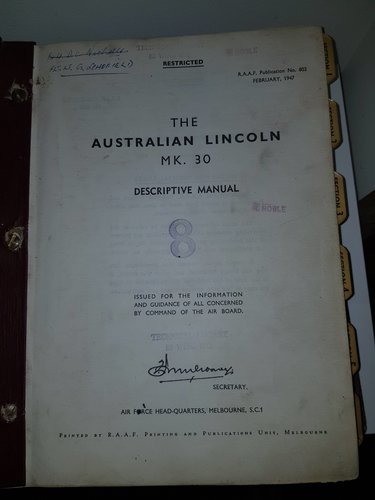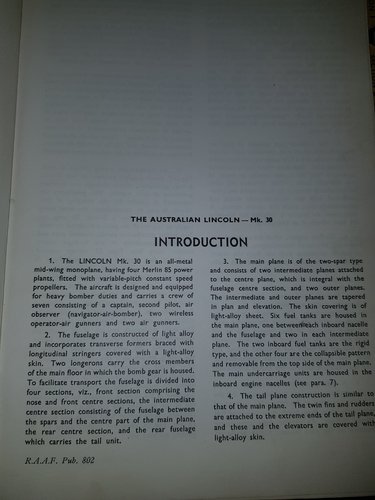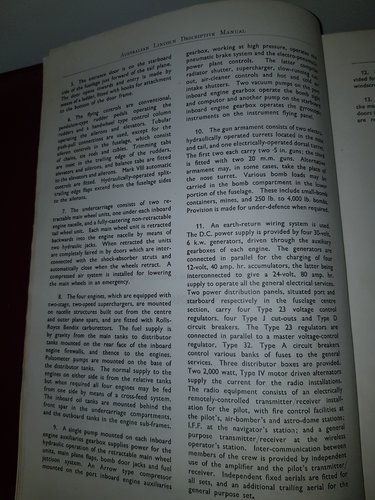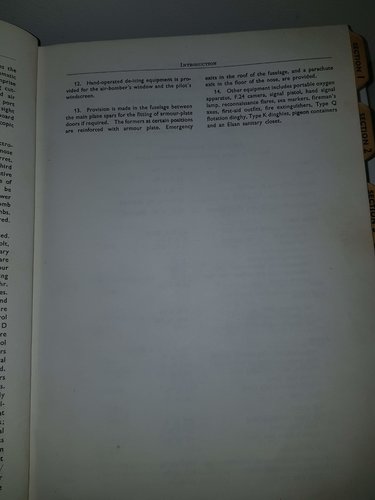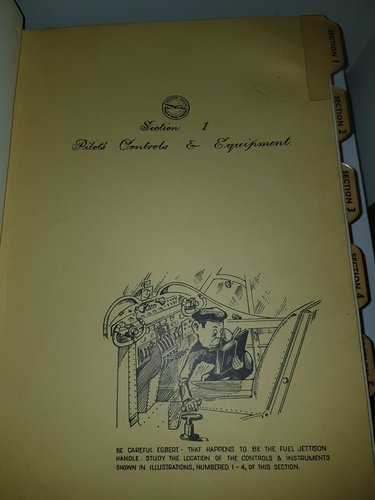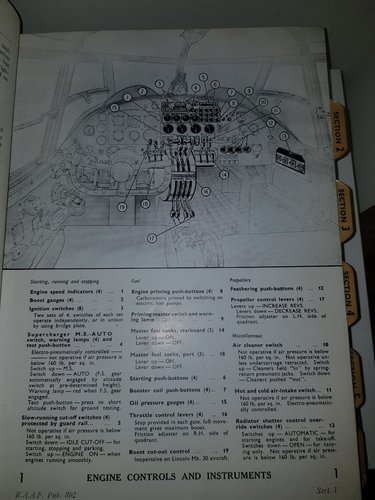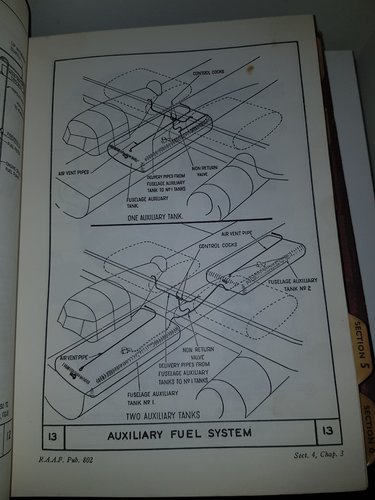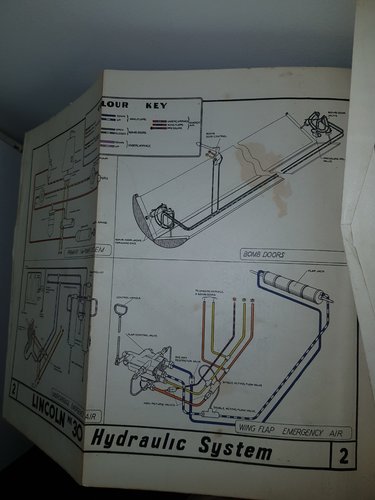The Avro Lincoln was a long-range, high altitude version of the successful Avro Lancaster four-engined bomber. The first RAF Lincoln B Mk I flew on 9 June 1944, and operational squadrons were preparing to join Tiger force in the war against Japan, when World War II ended. Although the Lincoln did not take part in World War II, one Lincoln (RF345) was shot down by Russian MIG-15 jet fighters while on a training flight near East Germany in 1957. RAF Lincolns also operated against the terrorists in Malaya and the Mau-Mau in Kenya. Lincolns were phased out of service in the late 1950s, and were the last piston-engined bombers of the RAF.
In 1943 plans were under way in Australia for the Beaufort Division of DAP to build the Lancaster Mk III. On 11 May 1943, Lancaster "Q for Queenie" (A66-1) arrived in Australia as a pattern aircraft but, in the event, the Lancaster Mk IV (or GAF Lincoln B Mk 30 as it became known) was built because of the long-range requirements in the Pacific area. Orders were placed for 85 Lincolns, but only 73 were built. The first five Lincolns, A73-1/5, were constructed from British supplied components, and A73-1 made its first flight on 17 March 1946. The first Australian-built Lincoln, A73-6, was delivered in November 1946. The Lincolns were phased into No 82 Bomber Wing at RAAF Amberley to replace the Liberators of Nos 12, 21 and 23 Squadrons. In February 1948, these units were renumbered Nos 1, 2 and 6 Squadrons, respectively, and a fourth Lincoln squadron came into being when No 10 Squadron re-formed on 17 March 1949 at RAAF Townsville as a general reconnaissance element. The Lincoln B30 originally had four Merlin 85 engines, but was later equipped with a combination of two Merlin 66s in the outboard positions and two inboard Merlin 85s. Eventually, four Merlin 102s were installed and this version became the GAF Lincoln B Mk 30A.
In 1949, 14 Lincolns, A73-31/34, 36/37, 38 (prototype) 39/40 and 42/46 were modified as long range navigation (LRN) aircraft for special duties. The modifications included the fitment of radio/radar equipment instrumentation, and an extra crew station aft of the mid-upper turret. Another major modification occurred when A73-48 became the prototype for the so-called "long-nose Lincoln". A 6ft 6in extension to the forward fuselage was inserted between the cockpit and the front turret to house radar equipment and operators for No 10 Squadron's maritime reconnaissance commitments. This version became the GAF Lincoln MR31, and although 19 other "long-nose Lincolns" were produced (A73-28, 55/57, 59/73), only 10 were equipped fully for the MR role: A73-28, 55, 57, 60/62, 65/68. The last Lincoln, A73-73, was delivered from GAF on 23 September 1953.
Other revamped Lincolns included the two VIP transports, A73-14 and 18, with fuselage windows and seats, and A73-15, the Air Navigational School's long-range trainer with faired-in gun turrets. Lincolns used on special tasks included A73-2, Wing Commander D.R. Cuming's 'NYHUAN" (Pathfinder), which surveyed the Woomera range site and carried out flights far into the Antarctic; A73-34, which Wing Commander G.H. Shields flew with cosmic-ray-recording equipment for scientific purposes during the International Geophysical Year; and A73-29, the experimental rain-making Lincoln flown by Squadron Leader N. Nichol, who also flew an Australian Lincoln to the UK for service with the RAF in exchange for a Lincoln B2 which operated with No 82 Wing.
At least nine different RAF Lincolns operated with the RAAF in various armament and engine trials, including the Python/Merlin-engined Lincoln, RF403, which carried out high-altitude bombing trials at Woomera and was scrapped at RAAF Tocumwal in 1958.
Most Lincoln B30/30As operated at one time or another with No 1 Squadron in Malaya. This squadron arrived in Singapore on 17 July 1950, and remained for eight years, during which time over 3000 sorties were carried out against the Communists. By the late 1950s the Canberra jet bomber had replaced the Lincoln B30/30As, although No 10 Squadron continued to operate Lincoln MR31s until the last flight was made by A73-65 in June 1961.
In fifteen years, from 1946 to 1961, 11 Lincolns were written off in accidents (A73-11, 16, 31, 35, 39, 40, 44, 46, 51, 63 and 69) but the remainder gave good service and were eventually sold as scrap or used for fire-fighting practice.
As the largest aircraft to be built in Australia, the Lincoln goes down in history as a credit to the local aircraft industry, and it also marked the passing in RAAF annals of the era of the multi-engined heavy bomber, with its large complement of aircrew members.



